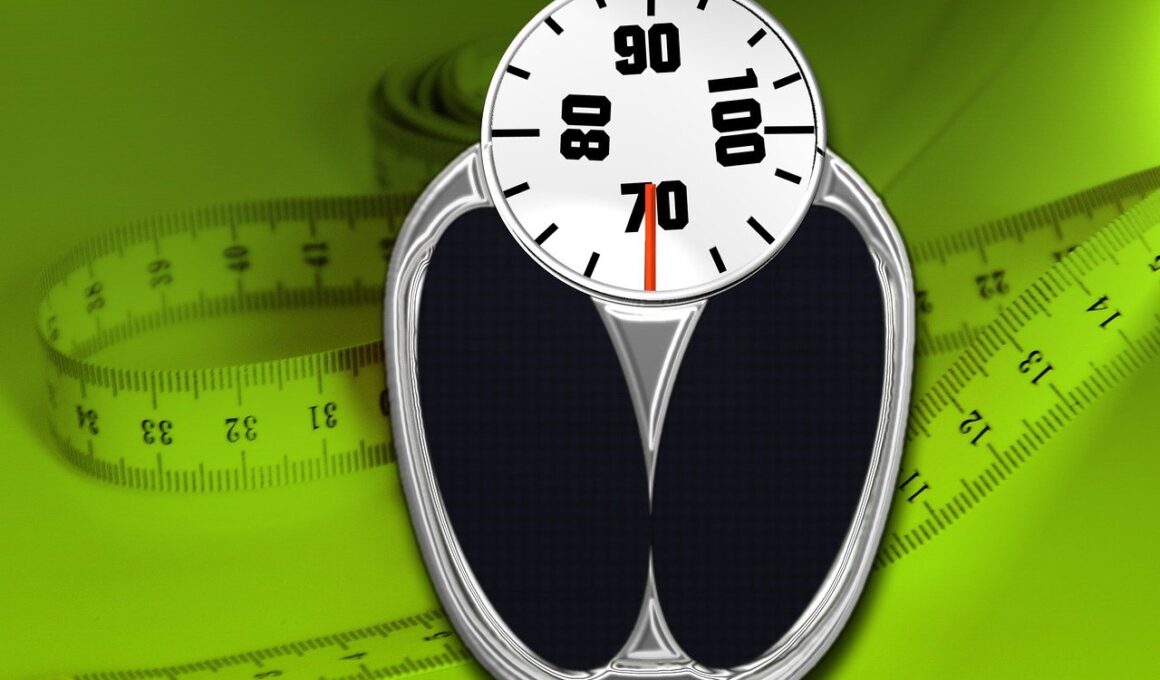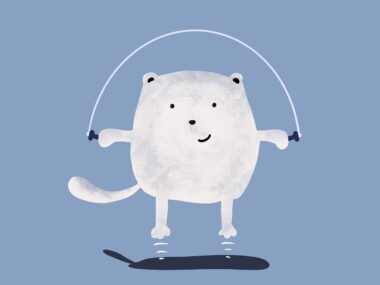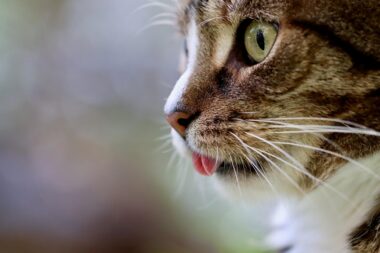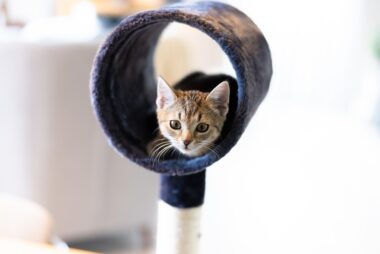Tracking Your Cat’s Weight
Managing your cat’s weight is crucial for their overall health and well-being. Regularly tracking their weight can help you identify any changes, ensuring early intervention if problems arise. Start by weighing your cat weekly for consistent results. Use a digital scale for accuracy, keeping your cat calm for the best weight reading. Consider creating a chart to track her weight over time, noting any adjustments in diet or activity. Keeping track of weight changes can alert you to potential health issues. Consult your veterinarian to determine your cat’s ideal weight based on her breed and age. Factors like age and genetic predisposition can impact weight as well. If your cat is gaining weight, monitor her food intake and adjust portions accordingly. Focus on high-quality cat food that benefits your cat’s needs. Encouraging physical activity through playtime can also aid weight management. Use toys that stimulate her hunting instincts, making playtime enjoyable. Remember, consistency is key to seeing results. With careful monitoring, you can help your cat maintain a healthy weight and avoid obesity-related health problems.
Establishing a Weight Baseline
Before tracking your cat’s weight, establish a baseline to gauge her health accurately. Weighing her within the same environment helps maintain consistent results. Preferably weigh her first thing in the morning after her bathroom break. Additionally, measure her on a flat surface to ensure an accurate reading. Write down her initial weight in a journal dedicated to her care. Tracking her weight regularly will also show patterns in weight gain or loss related to her diet, activity, and general health. Along with her weight, observe her overall demeanor and behavior. Changes in weight may sometimes indicate underlying issues, such as stress or illness, which require attention. It’s also helpful to keep a record of any new foods or treats introduced into her diet. Remember to weigh her consistently at the same time and day of the week. Regular weight tracking can foster better understanding and deeper awareness of your pet’s needs. Keeping a close eye on any fluctuations changes your approach to your cat’s diet or energy levels. This way, you will be able to identify changes swiftly and seek veterinary advice if necessary.
Caloric Intake and Healthy Diet
To effectively manage your cat’s weight, understanding her caloric needs is essential. Factors such as age, breed, activity level, and overall health impact her ideal caloric consumption. Consult with your veterinarian to determine her specific caloric requirements, ensuring optimal nutrition and health. Weight management can be achieved by regulating her food intake and balancing it with suitable exercise routines. Opt for high-quality cat food that sustains her energy and meets her dietary needs. You can find numerous brands in pet stores that cater specifically to weight management. Additionally, consider making homemade treats using wholesome ingredients to reward your cat while keeping her healthy. Monitor her portion sizes closely by measuring her food to prevent overeating. Use feeding guidelines provided on food packages for assistance. Consider feeding your cat multiple small meals throughout the day instead of one large portion to manage her hunger levels effectively. This routine can keep her energy up without excessive calorie intake. Encouraging your cat to engage more actively during playtime can help burn calories, thus enhancing her overall physical fitness.
In addition to portion control, monitoring your cat’s hydration is vital in weight management. Drinking plenty of water helps maintain a healthy metabolism and can curb unnecessary hunger. Ensure fresh, clean water is available at all times. Pay attention to her drinking habits and refilling her water bowl regularly. You may even consider investing in a cat water fountain, which can entice her to drink more effectively. Once you observe your cat adjusting to her new diet and hydration routines, check for weight changes weekly. Note the weight fluctuations and ensure those are accompanied by changes in activity levels. If your cat isn’t losing weight, consult with your veterinarian for further advice. Always remember that drastic weight loss is not advisable, as healthy dieting takes time. Steadily adjusting her caloric intake along with increased activity levels supports gradual weight loss, protecting her health overall. Celebrate small milestones along the way, such as reaching a healthy weight or achieving goals. Always reward her dedication with love and affection. With patience and commitment, both you and your cat can enjoy improved health and quality of life.
Physical Activity for Cats
Incorporating regular physical activity is critical for your cat’s weight management plan. Each day, schedule time to play with your cat, using toys that stimulate her natural instincts. Engage her in activities like chasing laser pointers or batting around mouse-shaped toys. Remember that active playtime contributes to her emotional well-being as well. An energized cat is a happy cat! Additionally, consider creating an obstacle course at home with boxes or tunnels where your cat can climb and explore. This complexity can foster fun learning experiences while enhancing her physical fitness. You can involve her nightlife with interactive toys that keep her moving even when you are not around. Rotating toys regularly can keep her engaged and prevent boredom. Walking a leash-trained cat outside is also a great way to explore the outdoors while burning calories. If your cat prefers independent playtime, provide cat trees or shelves for climbing. All these activities help maintain muscle mass while improving coordination and stamina, allowing her to enjoy life more explosively. Regular physical activity is crucial for managing their weight while promoting a long, fulfilling life.
It’s essential to remember that monitoring your cat’s health requires addressing mental and emotional well-being. A happy cat is more likely to engage in physical activities, so pay attention to her needs. Provide enrichment through various toys, scratching posts, and climbing structures. Awareness of stress factors is equally essential, as changes in the household can impact her eating habits and choices. Regular interaction can boost her mood and support a positive eating schedule, while addressing her behavioral needs encourages better overall health. Spend quality bonding time through grooming, petting, or just sitting together; this reassurance creates stability in her environment. Maintaining a routine helps every aspect of her life flourish, including her diet and exercise. If you notice an increase in appetite or changes in behavior, consult your vet for tailored advice. Little changes mean a lot when it comes to weight management. This holistic approach benefits your cherished feline while fostering a deeper bond with her. Stimulating her mentally will improve her physical well-being. Continue to check in on her weight weekly, keeping an eye on her overall health and happiness.
Conclusion: Commitment to Your Cat’s Health
In conclusion, proper weight management requires commitment and dedication to your cat’s overall health. By tracking her weight and monitoring dietary intake, you support her well-being for years to come. Documenting her progress, including activity levels and behavior adjustments, helps reveal her dietary needs. Collaborate with your veterinarian on appropriate diet and exercise regimens tailored specifically to her shape. Recognize that changes may take time, but consistency and patience can lead to desirable results. Celebrate milestones together, reinforcing your bond through shared achievements. Remember that your cat’s health directly correlates with a happy, active lifestyle that considers her emotional needs. Regularly weigh her to ensure sustained weight loss results or maintenance. Create engaging environments with activities and stimulating toys that promote health without compromising her happiness. Utilize all the tools at your disposal, including nutritional advice and natural remedies. Keeping your commitment to her care reaffirms your genuine love for her well-being. Strengthen this journey together towards maintaining an ideal body size, leading to an enriched quality of life that enhances both of your experiences.





